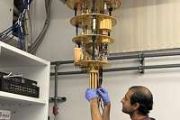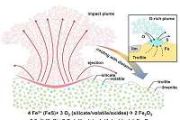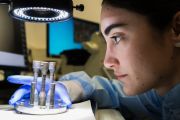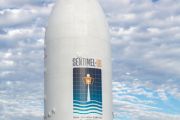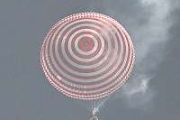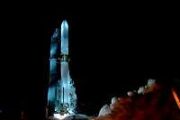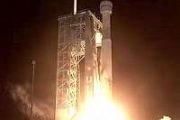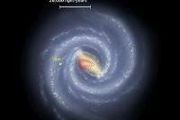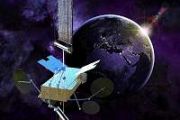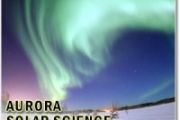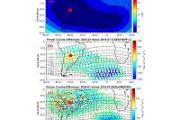
Copernical Team
Scientists zoom in on the Asian monsoon season using satellite data
 Scientists from Tokyo Metropolitan University and other institutes have studied new satellite data showing the diameter of rain droplets and the distribution of heavy ice in the atmosphere worldwide. They focused on the Asian monsoon region, finding larger droplets and more heavy ice precipitation on land before the actual monsoon season. Their findings shed new light on the features of the pre-
Scientists from Tokyo Metropolitan University and other institutes have studied new satellite data showing the diameter of rain droplets and the distribution of heavy ice in the atmosphere worldwide. They focused on the Asian monsoon region, finding larger droplets and more heavy ice precipitation on land before the actual monsoon season. Their findings shed new light on the features of the pre- PAR Government shares in $900M Space Force contract
 PAR Technology Corporation (NYSE: PAR) reports that its wholly owned subsidiary PAR Government Systems Corporation, in close partnership with ICEYE US, the leading commercial provider of space-based radar capabilities, has signed a prime contract award for the Proliferated Low Earth Orbit (PLEO) Satellite-Based Services initiative led by the U.S. Space Force.
The contract serves as a mecha
PAR Technology Corporation (NYSE: PAR) reports that its wholly owned subsidiary PAR Government Systems Corporation, in close partnership with ICEYE US, the leading commercial provider of space-based radar capabilities, has signed a prime contract award for the Proliferated Low Earth Orbit (PLEO) Satellite-Based Services initiative led by the U.S. Space Force.
The contract serves as a mecha Viasat provides status update on Inmarsat-6 F2
 Viasat Inc. (NASDAQ: VSAT) has confirmed that its Inmarsat-6 F2 (I6 F2) satellite, which was launched on February 18, 2023, has suffered a power subsystem anomaly during its orbit raising phase.
At this stage, Viasat and Airbus, the satellite's manufacturer, are working to determine the root cause of the anomaly and assess whether the satellite will be able to perform its mission. Airbus h
Viasat Inc. (NASDAQ: VSAT) has confirmed that its Inmarsat-6 F2 (I6 F2) satellite, which was launched on February 18, 2023, has suffered a power subsystem anomaly during its orbit raising phase.
At this stage, Viasat and Airbus, the satellite's manufacturer, are working to determine the root cause of the anomaly and assess whether the satellite will be able to perform its mission. Airbus h Russia fails to restart space exporation program, eyes Chinese cooperation
 This week, the Russian space agency Roscosmos had hoped to return to the Moon after an absence of nearly 50 years. Instead, on Saturday it lost control of its Luna-25 lander. The agency explained the spacecraft "switched to an off-design orbit and ceased to exist as a result of a collision with the lunar surface".
Yet, in an interview aired on state television, the agency's chief, Yuri Bor
This week, the Russian space agency Roscosmos had hoped to return to the Moon after an absence of nearly 50 years. Instead, on Saturday it lost control of its Luna-25 lander. The agency explained the spacecraft "switched to an off-design orbit and ceased to exist as a result of a collision with the lunar surface".
Yet, in an interview aired on state television, the agency's chief, Yuri Bor PILOTing through the magnetosphere: Using mission design to advance science
 Not so long ago (2022), Advanced Space collaborated with a team of science and engineering organizations to help design a science mission to study the effects of the biggest space weather maker in the solar system: the Sun. The mission concept, called Plasma Imaging, LOcal measurement, and Tomographic experiment (PILOT), is designed to measure the flow of cold, dense plasma into and out of Earth
Not so long ago (2022), Advanced Space collaborated with a team of science and engineering organizations to help design a science mission to study the effects of the biggest space weather maker in the solar system: the Sun. The mission concept, called Plasma Imaging, LOcal measurement, and Tomographic experiment (PILOT), is designed to measure the flow of cold, dense plasma into and out of Earth NASA's TEMPO sends first North American pollution data maps
 The first data maps from a NASA pollution-monitoring instrument were released Thursday. NASA's TEMPO device creates visual representations of pollution and air quality over North America from 22,000 miles above the equator.
"Neighborhoods and communities across the country will benefit from TEMPO's game-changing data for decades to come," NASA Administrator Bill Nelson said in a stateme
The first data maps from a NASA pollution-monitoring instrument were released Thursday. NASA's TEMPO device creates visual representations of pollution and air quality over North America from 22,000 miles above the equator.
"Neighborhoods and communities across the country will benefit from TEMPO's game-changing data for decades to come," NASA Administrator Bill Nelson said in a stateme Lockheed Martin to supply 36 Small Satellites to advance SDA satcom network
 The Space Development Agency (SDA) awarded Lockheed Martin (NYSE: LMT) a firm-fixed price agreement valued at approximately $816 million to build 36 Tranche 2 Transport Layer (T2TL) Beta satellites. T2TL is part of an overarching plan to strengthen deterrence with more resilient space architectures for beyond line-of-sight (BLOS) targeting, data transport, and advanced missile detection and trac
The Space Development Agency (SDA) awarded Lockheed Martin (NYSE: LMT) a firm-fixed price agreement valued at approximately $816 million to build 36 Tranche 2 Transport Layer (T2TL) Beta satellites. T2TL is part of an overarching plan to strengthen deterrence with more resilient space architectures for beyond line-of-sight (BLOS) targeting, data transport, and advanced missile detection and trac In the service of planetary science, astrophysics and heliophysics
 New Horizons is healthy, in active operations mode and speeding across the Kuiper Belt. Just as it did while hibernating from June 2022 through February 2023, the spacecraft is collecting round-the-clock data on our Sun's cocoon in the galaxy called the heliosphere.
I am even more excited about an intense period of diverse science observations that is stretching across August and September
New Horizons is healthy, in active operations mode and speeding across the Kuiper Belt. Just as it did while hibernating from June 2022 through February 2023, the spacecraft is collecting round-the-clock data on our Sun's cocoon in the galaxy called the heliosphere.
I am even more excited about an intense period of diverse science observations that is stretching across August and September How a cup of water can unlock the secrets of our Universe
 Researchers from Queen Mary University of London have made a discovery that could change our understanding of the universe. In their study published in Science Advances, they reveal, for the first time, that there is a range in which fundamental constants can vary, allowing for the viscosity needed for life processes to occur within and between living cells. This is an important piece of the puz
Researchers from Queen Mary University of London have made a discovery that could change our understanding of the universe. In their study published in Science Advances, they reveal, for the first time, that there is a range in which fundamental constants can vary, allowing for the viscosity needed for life processes to occur within and between living cells. This is an important piece of the puz Accretion disks: How big are they really?
 Using the Gemini North telescope, one half of the International Gemini Observatory, operated by NSF's NOIRLab, astronomers have detected for the first time evidence of the presence of an accretion disk within the active galactic nucleus of galaxy III Zw 002. Using two rare and peculiar near-infrared emission lines, these observations place firm limits on the size of the galaxy's accretion disk a
Using the Gemini North telescope, one half of the International Gemini Observatory, operated by NSF's NOIRLab, astronomers have detected for the first time evidence of the presence of an accretion disk within the active galactic nucleus of galaxy III Zw 002. Using two rare and peculiar near-infrared emission lines, these observations place firm limits on the size of the galaxy's accretion disk a 


